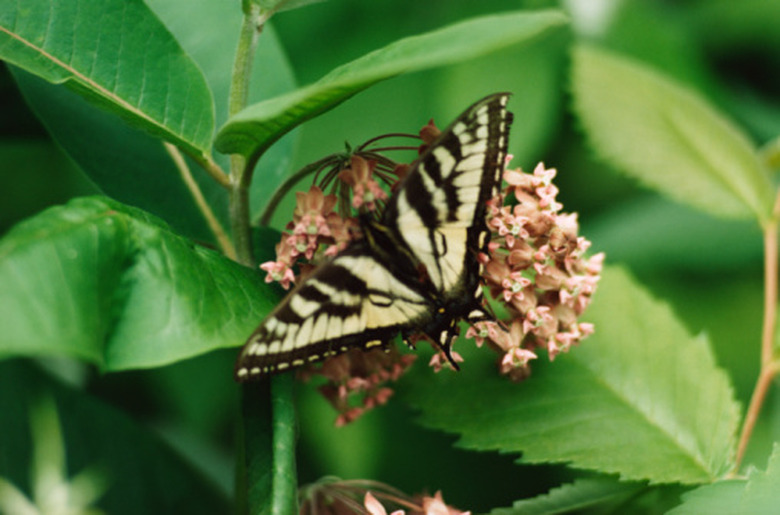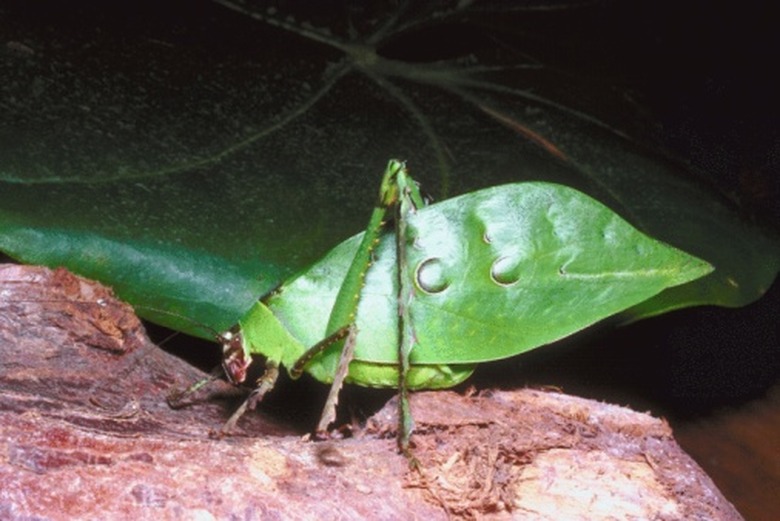Two Types Of Life Cycles Of Insects
There are a multiple types of insect life cycles. Some insects, like aphids, can be born parthenogenically, without assistance from a male. Many insects lay eggs but in some the larvae are born alive. In some primitive insects the male will place a spermatophore on the ground and a female will come along, pick it up and fertilize her eggs. Predatory dragonfly nymphs live in water, and when they're mature, will crawl out on a stalk of grass, split their skin and release the winged adult. Other insects have different strategies.
Incomplete metamorphosis
Incomplete metamorphosis
Metamorphosis happens to most insects at some stage of their life. One type of metamorphosis is incomplete metamorphosis, called hemimetabolous metamorphosis. After hatching from eggs the juvenile insects look like miniature adults. They simply molt, or shed their exoskeletons, till they reach the adult stage. They at first lack wings but gradually develop wing pads and then wings. During the final molt the reproductive system matures.
Insects with Incomplete Metamorphosis
Insects with Incomplete Metamorphosis
Insects with incomplete metamorphosis are grasshoppers and katydids of the orthopteran order. The Jerusalem cricket is also an orthopteran. It has a brownish-red body and an abdomen banded in black and long antennae that make it look like a cross between an ant and a cricket, which it's not. Jerusalem crickets are nocturnal and live in British Columbia to Mexico, South Dakota and Colorado. Walking sticks are aptly named, and can disappear among the twigs of trees. When threatened they hold absolutely still. They eat leaves, especially of oak trees. Preying mantises also have incomplete metamorphoses, as do cockroaches.
Complete metamorphosis
Complete metamorphosis
Complete metamorphosis is the more advanced type of metamorphosis and is called holometabolous metamorphosis. There are four stages to this complete metamorphosis: egg, larva, pupa and adult. The larva is a feeding system and where all of the animal's growth takes place. The larva is completely different from the adult and always has chewing mouthparts. When the larva is mature it becomes a pupa. As it pupates much of its internal anatomy is destroyed and rebuilt. The adult then emerges from the pupa. Metamorphosis is controlled by three hormones form glands in the head and thorax, or body, of the larva and pupa.
Insects with Complete Metamorphosis
Insects with Complete Metamorphosis
The complete metamorphosis of butterflies is well studied. Some of them have fantastically colorful or grotesque caterpillars and some even have beautiful pupae or chrysalises. Wasps and bees have complete metamorphosis, and the larvae benefit because they're commonly taken care of by the adults until they become adult themselves. In the case of the parasitic wasp, the female lays its eggs on a host, often a caterpillar, and the larvae hatch and consume the caterpillar from the inside out and eventually kill it. Mosquitoes also have a complete metamorphosis, with the eggs being lain in water. The larva and pupa live in the water till the adult emerges from the pupa. The housefly lays about 150 eggs at a time in manure or rotting meat. The maggots feed on this, pupate and then emerge as new flies. The whole cycle takes about two weeks.
References
- "Simon and Schusters Guide to Insects"; Dr. Ross H. Arnett Jr., et al.;1987
- ""Butterflies and Moths; Robert T. Mitchell; 1964
- "Invertebrates; Protozoa to Echinodermata"; Ashok Verma; 2005
Cite This Article
MLA
McKanic, Arlene. "Two Types Of Life Cycles Of Insects" sciencing.com, https://www.sciencing.com/two-types-life-cycles-insects-8381025/. 22 November 2019.
APA
McKanic, Arlene. (2019, November 22). Two Types Of Life Cycles Of Insects. sciencing.com. Retrieved from https://www.sciencing.com/two-types-life-cycles-insects-8381025/
Chicago
McKanic, Arlene. Two Types Of Life Cycles Of Insects last modified March 24, 2022. https://www.sciencing.com/two-types-life-cycles-insects-8381025/

